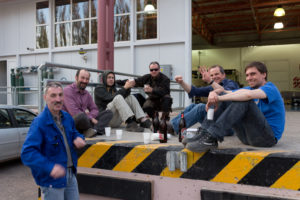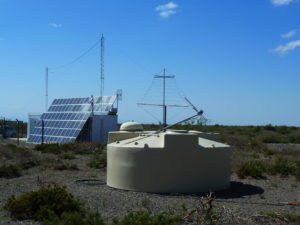The Antarctic Ross Ice-shelf ANtenna Neutrino Array (ARIANNA) aims to detect high-energy neutrinos via their radio emission. The radio technique allows a cost-efficient instrumentation of huge volumes which allows to tackle neutrinos at the highest energies. A pilot array has been running on the Ross Ice shelf in Antarctica for several years probing a successful hardware operation in the harsh Antarctic conditions. ARIANNA serves as a pathfinder of a large-scale radio array.
I joined this promising project in summer 2017, as a DFG research fellow at University of California, Irvine.
The Pierre Auger Observatory is the world’s largest experiment to measure cosmic rays. It’s located in western Argentina and covers more than 3000 km2. During my PhD, I worked on the Auger Engineering Radio Array which is also the world’s largest radio detector of cosmic rays. I mostly worked on data analysis and developed a universal estimator of the cosmic-ray energy and worked out a novel way to perform the energy calibration of the Observatory.















